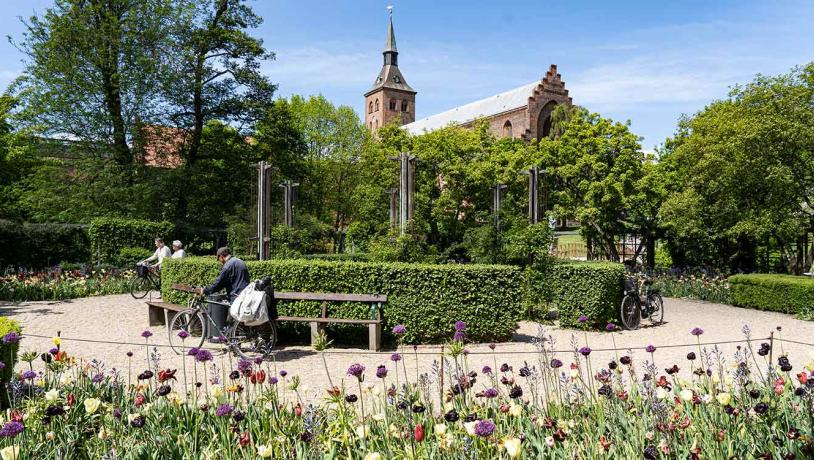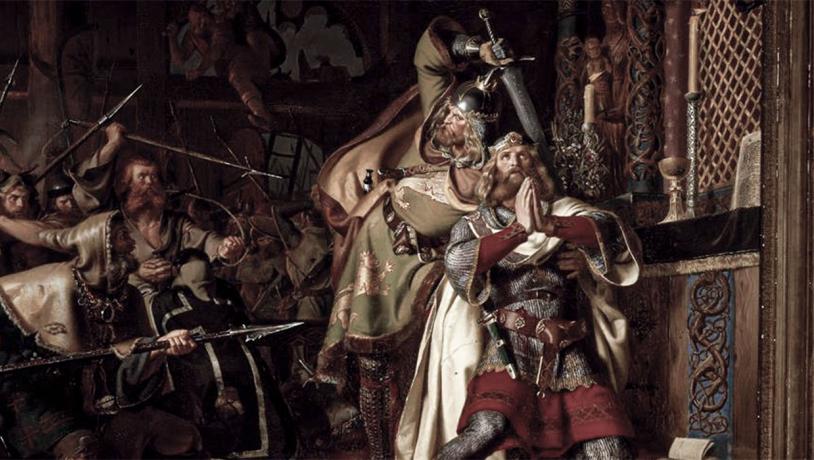On 10th July 1086 Cnut took refuge inside the wooden Saint Albany Church with his brother Benedict and seventeen followers. Cnut, being the religious man he was, fell to his knees, begged God for his life and hoped nobody would harm him in God’s house. Unfortunately, the wooden doors could not keep the mob out, and all seventeen followers were killed. Cnut then accepted his fate and knelt before the alter, ready to take every single hit, and was ultimately killed by a spear.
Denmark became more and more religious as time went by, and in the years after the murder of Cnut, the country was plagued by crop failures, and many considered it to be God’s punishment for the assassination. Combined with the many miracles reported as taking place at Cnut’s grave, the project of making Cnut a saint started. As part of the project, Cnut’s bones were dug up in 1095 and put under several tests, to answer the question if he was a saint. These tests came out positive, and in 1100 was Cnut recognised as a saint by the Catholic Church and was moved to the new Cathedral in Odense.
Perhaps not that surprising, Cnut the Holy never really became a popular saint among Danes. However, he was of great importance for the royal family, who suddenly could be linked to God through the royal saint. Cnut’s status as saint was also used as an argument for continuing the same path as Cnut did through his reign.
The remains of Cnut and his brother Benedict can still be seen in the Cathedral in Odense, Saint Cnut Church, and close by, a statue of the Saint can be found on the spot where he was killed.
Artikel af Sofie Schäfler







